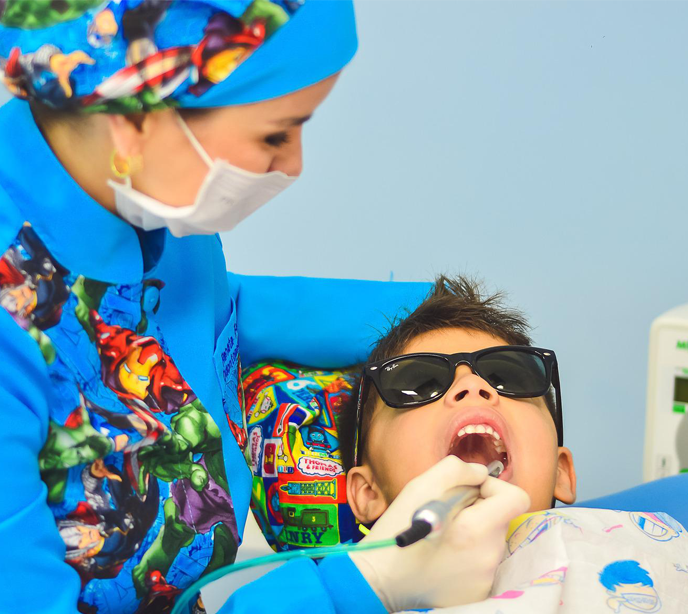Managing Autism and Food Aversion
Food aversion is a common challenge faced by autistic individuals. By learning about the root cause and applying practical tips, as well as leveraging the help of professionals when needed, you can support your child in overcoming their food aversions to enjoy a healthy relationship with meal times.

Tips for Managing Autism and Food Aversion
Autism is a neurodevelopmental disorder that affects an individual’s communication, behavior, social skills, and often, sensory processing. One of the common challenges faced by autistic children is food aversion or refusal. This can be caused by various factors, including sensory issues, anxiety, and rigid eating habits. Join us as we explore the root cause of these issues and share practical tips and autism resources on how to help your child overcome their food aversions.
What is food aversion in autism?
So, what is a food aversion? Food aversion, also known as selective eating or picky eating, refers to the reluctance or refusal to eat certain foods. This behavior is commonly observed in children with autism spectrum disorder (ASD) and can have a significant impact on their health and development. Children with food aversion may have limited diets and may only eat a small variety of foods, making it challenging to meet their nutritional needs.
Signs your child may be experiencing aversion to foods:
- Refusal to eat specific types or textures of food or to try new foods.
- Intense negative reactions such as gagging or vomiting when presented with new or disliked foods.
- Preference for certain foods, eaten in large amounts and to the exclusion of others.
- Consuming the same food continuously for several days, then suddenly refusing it.
- Only agreeing to eat if specific conditions are met, such as using a certain plate or the food being prepared in a particular way.
Common causes of food aversion
There are a number of reasons why autistic children may have food aversions. Identifying the root cause is essential in the process of addressing it effectively. Before diving into any behavioral reasons for food aversions, it is always recommended to have a thorough medical evaluation to ensure there is no medical reason for what you are seeing. Most behavior analysts and speech language pathologist will request a confirmed clearance from your child’s pediatrician before starting any food goals or programming.
Sensory sensitivities
Autistic individuals often have sensory processing issues that can affect their eating habits. They may be sensitive to certain textures, tastes, or smells of food. As a result, they may refuse to eat foods that feel unpleasant to them.
Transitioning difficulties
Autistic children tend to thrive on routines and familiarity. Introducing new foods or changing the way a food is prepared can be a challenging experience. They may feel anxious and overwhelmed by changes, leading to food refusal.
Rigid eating patterns
Autistic individuals typically exhibit rigid or repetitive behaviors, including when it comes to food choices. They may prefer to eat the same foods every day and become distressed when their routine is disrupted.
Gastrointestinal issues
Some studies have shown a link between gastrointestinal (GI) issues and autism. Children with ASD may experience discomfort or pain after eating, making them avoid triggering foods.
The relation between sensory processing disorder and food
A significant factor contributing to food aversion in autistic children is sensory processing disorder (SPD). Autistic children may have difficulties in processing sensory information – which includes not only taste but also texture, color, smell, and even the sound that food makes when it’s chewed. This hypersensitivity can lead to feelings of irritation, overwhelm, frustration, stress, and panic attacks. This results in a preference for certain foods and rejection of others, leading to a highly limited diet.
For instance, a child might only accept crunchy foods and reject soft or pureed ones. Similarly, they might be more sensitive to spicy or sour flavors, preferring bland foods instead. Understanding the link between SPD and food aversion can help parents and caregivers approach mealtime with empathy and patience. It’s also beneficial for professionals in creating customized interventions.
How to overcome food aversions
Keep meal times structured and routine
Maintaining a consistent meal schedule can help your child understand when it’s time to eat and what to expect during mealtimes. Keep to a specific number of meals each day, at specific times, to create a sense of structure and familiarity.
If your child has difficulty eating larger meals, offer them snacks, again, keeping to a regular routine. This can help them stay nourished throughout the day and avoid feeling too hungry or full during mealtimes.
Take small steps toward new foods
Most autistic children prefer routine and consistency, which makes it challenging for them to accept new foods. To overcome this, introduce new foods gradually and in small portions. A practical example of this process would be starting with a familiar food that your child already enjoys, such as chips, and then substituting it for something with a similar texture, such as banana chips. Once the banana flavor is palatable, you could move to sliced bananas. The final step after that would be introducing a whole banana.
Involve your child in the cooking process
Involving your child in meal prep and grocery shopping can help increase their interest in trying new foods. You can have them pick out a new item at the store to try or have them help with simple tasks, such as stirring or mixing during cooking.
This also serves as a playful opportunity to teach your child about different foods and their benefits, helping them develop a better understanding and appreciation for a varied diet.
Get professional assistance
If your child’s food aversion is causing nutritional deficiencies or health issues, it may be necessary to seek professional help from a therapist or nutritionist who specializes in autism.
At Lighthouse Autism Center, we provide tailored strategies for addressing food refusal in autistic children and offer effective autism tools for parents. We can also help address any underlying sensory issues or behavioral challenges that may be contributing to the aversion.
Lighthouse Autism Center
With patience, persistence, and support, you can help your child manage their food aversions and enjoy a healthy relationship with food. During Lighthouse Fusion ABA therapy, your child receives one-on-one ABA therapy with a selection of dedicated professionals, tailored to their specific needs.
Together, we can unlock your child’s potential
Related News

10/07/2025
PECS and Its Use in ABA Therapy – Lighthouse Autism Center
The picture exchange communication system, or PECS, is a teaching system that can help an autistic child or another individual with speech difficulties improve their communication skills. We take a look at PECS’ role in ABA therapy and unpack how it works. What Is the PECS System and How Is It Used In ABA Therapy? […]

08/13/2025
ABA Therapy Tips for Taking Your Autistic Child to the Dentist
Taking Your Autistic Child to the Dentist For any child, and even adults, a trip to the dentist can often be filled with anxiety, fear, and discomfort. For a autistic child, especially, these feelings can be even further heightened by sensitivities to noise, smell, and touch. To make this experience better for both the child […]

08/13/2025
Tips for House Hunting with Your Child on the Spectrum
Guidance for Families with Children with Autism when Moving Moving is always a stressful and complicated endeavor. But when you have a child on the autism spectrum, the thought of packing up your household and moving somewhere new can seem like a near-impossible task. Parents often worry that their children will get overwhelmed by this […]


